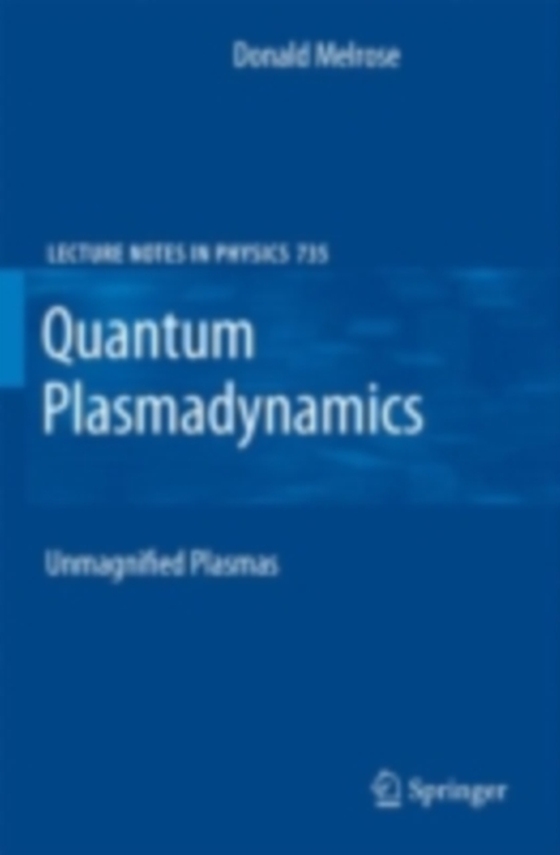
Quantum Plasmadynamics e-bog
1276,86 DKK
(ekskl. moms 1021,49 DKK)
The idea of synthesizing quantum electrodynamics (QED) and the kinetic theory of plasmas ?rst occurred to me in the early 1970s [1, 2]. The project to do so has been carried out bit by bit over the subsequent years. The name "e;quantum plasmadynamics"e; (QPD) is my own jargon [3] for the synthesized theory. Both QED and the kinetic theory of plasmas areconcerned with the int- action bet...
E-bog
1276,86 DKK
Forlag
Springer
Udgivet
29 december 2007
Genrer
PHFP
Sprog
English
Format
pdf
Beskyttelse
LCP
ISBN
9780387739038
The idea of synthesizing quantum electrodynamics (QED) and the kinetic theory of plasmas ?rst occurred to me in the early 1970s [1, 2]. The project to do so has been carried out bit by bit over the subsequent years. The name "e;quantum plasmadynamics"e; (QPD) is my own jargon [3] for the synthesized theory. Both QED and the kinetic theory of plasmas areconcerned with the int- action between charged particles and the electromagnetic ?eld, but they are radically di?erent in the way the interaction is described. The kinetic theory of plasmas is a collective-medium theory: a plasma is not a collection of - dependent particles in a given electromagnetic ?eld, but a medium in which the particles collectively modify the ?eld, and the ?eld modi?es the par- cles. The charge and current densities associated with the particles are part of a self-consistent ?eld. Conventionally, the kinetic theory of plasmas is a classical theory: the motions of particles are treated using classical dynamics.
 Dansk
Dansk

